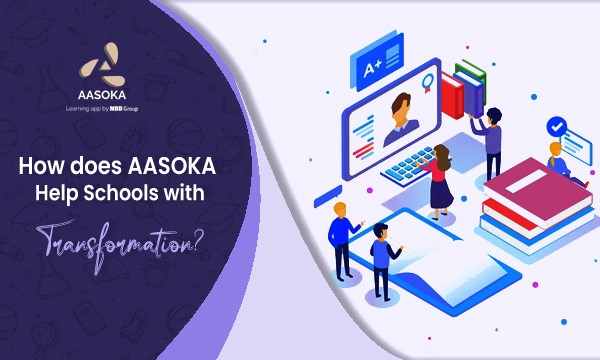
AASOKA, as a blended teaching and learning curriculum solution, combined with a school management system, creates a comprehensive approach to transforming schools. Here’s how this combination brings about positive changes:
-
Integrated Management System
As a school management system, AASOKA simplifies handling administrative tasks including scheduling, grading, and student data management. By automating these procedures, AASOKA relieves teachers administrative duties and frees them up to concentrate more on activities that promote teaching and learning. This integrated system guarantees effective school operations, allowing teachers to spend more time teaching. - Enhanced Teacher Training
To aid teachers in utilizing the blended teaching and learning curriculum efficiently, AASOKA offers specialized teacher training workshops. These training sessions go over themes including utilizing technology in the classroom, making the most of AASOKA’s features, creating stimulating lesson plans, and implementing personalized learning plans. AASOKA gives teachers the technological and pedagogical tools they need to design meaningful educational experiences. - Improved Teaching Practices
Innovative pedagogical practices are encouraged to be adopted when the integrated blended teaching and learning curriculum solution from AASOKA is combined with teacher training sessions. Teachers are provided with and also have the freedom to create exciting lesson that meet the needs of a variety of students by utilizing AASOKA’s resources, multimedia content. The training sessions assist teachers in exploring various teaching philosophies and motivate them to use student-centered strategies, which lead to improved learning outcomes. - Data-Driven Decision Making
AASOKA generates comprehensive data on a variety of areas of school operations, student performance, and teaching techniques thanks to its integrated school management system. This data is used to track students’ development, pinpoint areas for development, and make data-driven decisions for both the classroom and the school. Schools can use this data to develop focused interventions, offer students specialized support, and improve the general standard of classroom instruction. - Collaboration and Communication
Teachers, students, parents, and administrators communicate effectively with the help of AASOKA’s collaboration and communication tools and the school management system. Through AASOKA’s communication channels, teachers can work together, share resources, and exchange best practices. Access to student data, tracking of achievement, and teacher communication are all available to parents, encouraging a productive home-school relationship. - Continuous Professional Development
The teacher training workshops offered by AASOKA are an ongoing process that offer possibilities for continual professional growth. To keep teachers abreast of the most recent developments in technology, teaching methods, and trends in education, schools regularly host workshops. This method of lifelong learning makes sure that teachers remain inspired, gain new abilities, and adjust to the changing demands of their students. - Holistic Transformation
By combining AASOKA’s blended teaching and learning curriculum solution, school management system, and teacher training sessions, schools can undergo a holistic transformation. This comprehensive approach integrates technology, pedagogy, and management practices to create an enriched learning environment. It promotes student engagement, personalized learning, effective communication, and data-driven decision-making, ultimately leading to improved student outcomes and overall school success.
Conclusion
By leveraging the combined power of AASOKA‘s solutions and teacher training, schools effectively implement digital transformation, enhance teaching practices, streamline administrative tasks, and foster a culture of continuous improvement. This holistic approach supports the transformation of schools into dynamic, student-centered learning communities.
